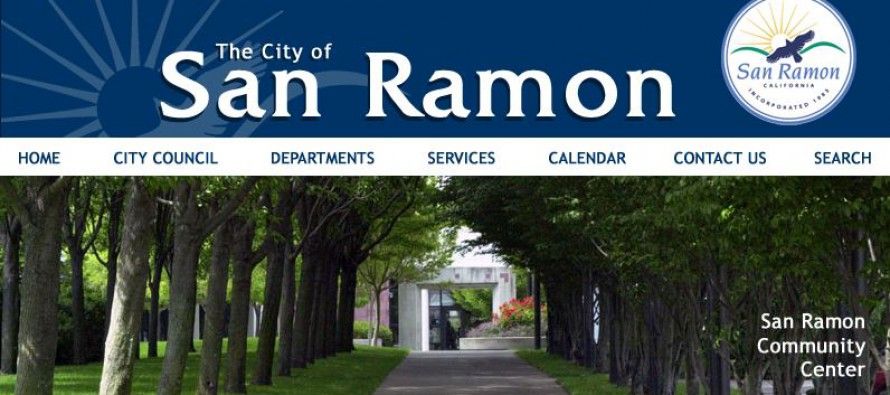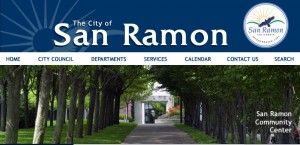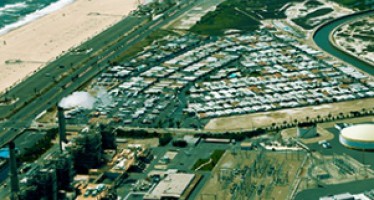San Ramon sued over ‘pension’ tax

 Is it legal for a city to make new residents pay hundreds of dollars extra in property taxes for essentially the same city facilities and services that current residents receive?
Is it legal for a city to make new residents pay hundreds of dollars extra in property taxes for essentially the same city facilities and services that current residents receive?
That question is at the heart of a lawsuit recently filed by the Building Industry Association of the Bay Area against the city of San Ramon.
“San Ramon is violating the law by creating a new property tax district that doesn’t provide any new services, but simply forces property owners to help pay for existing expenses in the city’s general budget, such as public pensions,” said BIA’s representative Pacific Legal Foundation in a press release.
This upscale East Bay suburb, like most California cities, has had to tighten its belt since the Great Recession and look for additional ways to raise revenue. City officials are hoping to bring in an extra $2 million annually from the 2,563 remaining, mostly infill, parcels.
A ‘pension tax’
But the city is not allowed to raise revenue by placing an extra tax on new residents without providing extra services in exchange, according to PLF Principal Attorney Damien Schiff.
The higher taxes on new residents “will be used for existing municipal services — services that property owners already pay for under existing property taxes,” he said. “The effect will be to free up city money to help cover heavy pension costs and other budget commitments.
“Therefore, the scheme could be called a ‘pension tax,’ or a ‘pay something but get nothing’ property tax. Either way, it’s unfair — and illegal.”
City officials and their bond counsel respond that there is nothing illegal about forming a community facilities district to ensure that new development pays its fair share.
Each new home should be paying $375 annually to meet the city’s parks requirement, according to a San Ramon budget report. The cost of police services is $433 per home annually.
Both sides of the issue made their case at the Feb. 25 San Ramon City Council meeting, providing a preview of the upcoming arguments in Contra Costa County Superior Court.
Mello-Roos violation?
Bob Glover, BIA Bay Area executive officer, said he’s concerned that San Ramon’s tax-hike mechanism could “be duplicated in other regions throughout the state.”
He argued that it violates the Mello-Roos Community Facilities Act of 1982. That act allows the formation of CFDs to provide facilities and services including police, fire, parks, landscaping, sewer, water, lighting and recreation.
“The statute expressly prohibits the use of special taxes imposed via the act’s landowner and voter provisions to finance services unless the services to be provided represent a new or enhanced level of service,” said Glover. “I think it’s important to point out that the city’s current proposal shows that all future residential units paying the tax will not be entitled to receive new or enhanced special services.”
Chris Lynch, the city’s bond counsel, agreed that Mello-Roos taxes must be used for a “new or enhanced level of service.” He added, “But that is what the city is doing here. The city will levy a tax to pay for additional services provided in connection with new development.”
City Attorney Bob Saxe, in an interview, said that BIA’s argument, if carried out, would defeat the purpose of Mello-Roos districts.
“If you take a literal application of what BIA is saying, even though under Mello-Roos you can finance park services, if the city has a park, you can’t [tax additionally for parks] because it’s an existing service,” Saxe said.
Mayor: housing doesn’t pay its way
Mayor Bill Clarkson sounded a bit prosecutorial as he questioned Glover after chiding him for filing his protest at the last minute.
“The only question I have for you is the overlying city policy that we put into effect last year that says that any new development in San Ramon has to pay its own way,” said Clarkson. “Housing by itself, clearly from our point of view, does not pay its way by itself.”
Clarkson asked, “So is the BIA philosophically opposed to a policy that would make housing have to make sure it pays its full carrying cost to a city, especially in these tight economic times?”
Glover responded, “No, not at all. I think there’s just a fundamental disagreement that we do feel that housing does pay its fair share. And, unfortunately, as part of this overlying CFD for the entire city, there has been no financial analysis indicating that that is not the case.”
Depending on the meaning of the word “additional,” the Mello-Roos Act may favor Glover’s argument. It states:
“A community facilities district tax … may only finance the services … to the extent that they are in addition to those provided in the territory of the district before the district was created. The additional services shall not supplant services already available within that territory when the district was created.”
Special vs. general taxation
The lawsuit’s second argument against the CFD also depends on word definitions – in this case “special tax” tax versus “general tax.” The lawsuit states:
- “The California Constitution forbids a special purpose district to levy a general tax.
- “The [San Ramon CFD] is a special purpose district because its only power is to levy a tax authorized by the vote of the landowners or registered voters within its territory.
- “The City has established the District to levy a tax to pay for general municipal services within the District.
- “The purpose of the tax that the District will levy is to mitigate for the negative financial impact that new development within the District will allegedly have on the City’s General Fund revenue.
- “A significant portion of the City’s General Fund revenues is used to pay for the municipal services for which the District will levy its tax.
- “Therefore, the tax is an unconstitutional ‘general tax’ within the meaning of section 2(a) of Article XIIIC of the California Constitution.”
Special tax for specified services
Lynch responded to that argument, which also was provided in a BIA letter to the city.
“The letter appears to say that because of the breadth of services that can be financed by the CFD, this tax constitutes a general tax and cannot be approved by a special district,” said Lynch. “The letter has the law right that CFDs must only levy special taxes. But it doesn’t apply it correctly to the facts.
“The California Constitution defines ‘general taxes’ and ‘special taxes.’ And ‘general tax’ is a tax imposed for general governmental purposes. And ‘special taxes’ are those levied for a specific purpose.
“The Mello-Roos act defines a discreet and limited set of services that can be financed by a CFD. And the proposed formation proceedings here and the report you received describe a limited set of services. Tax when collected will be put into a special fund and can only be used for those authorized services. It cannot be used for general governmental purposes. The letter has that claim wrong.”
City could stop providing services
The BIA also argues that San Ramon seeks to punish CFD residents who choose to withdraw from the district or abolish the tax.
If residents or businesses pull out, San Ramon “shall cease to be obligated to provide the Authorized Facilities and Authorized Services for which the Special Tax was levied,” according to one of the formation provisions.
The suit argues that that provision “punish[es] property owners for exercising their protected statutory and constitutional rights, and thereby violate due process.”
Lynch responded that it’s actually a common sense provision when forming a tax district.
“[I]f a property owner in the CFD were ever to take any action, including by initiative, to repeal the tax that the city is relying on to offset the negative financial impacts of development, the city would no longer provide the services or the facilities that are being paid for by the special tax, and would transfer those facilities or service obligations to a homeowners association or to the property owners,” he said.
“I think that’s a reasonable statement of an appropriate reaction by a city when faced with the loss of revenue established solely for the purpose of providing specific services and facilities. I’m not aware of any case law that has concluded that interferes with the exercise of the initiative power or First Amendment rights.”
No more cops?
But it’s not clear exactly what the consequences of the city stopping service delivery would mean to the ex-CFD residents who have been receiving the same services as non-CFD residents. Does it mean they would no longer receive police protection?
“It’s really hard to say in the real world what would happen in that situation,” said Saxe. “All this is intended to say, is that if something like that happens, then the city is out of the picture. And whatever it is, it’s on those property owners. I can’t quantify how much police services can be attributed to that.”
Glover concluded his presentation to the council, saying, “It’s safe to say that we disagree with the city’s assertion regarding the fiscal impact of new housing development. We feel that there are several compelling legal issues surrounding the establishment of the proposed CFD.
“We respectfully request that the city council not move forward with the proposal. And rather work with BIA and stakeholders to take a fresh look at this issue and work together to come up with a fair, equitable and legal approach to funding city services.”
Councilman David Hudson was receptive. “It’s one of those things that everything is going along, and you’re right – and end up losing,” he said. “That’s what I’m concerned about. Is this one of these cases that say, ‘Step back once and do a little outreach, and you’re better off’? Or am I the only one not completely clear?”
But Councilman Harry Sachs convinced the majority that nothing would be gained by delaying the vote. “I don’t know if I’ll hear anything new in two weeks,” Sachs said. “This is for new development. A lot of our development going forward is infill, its smaller projects, its units. We can do this, or they can look at paying lump sums to the city.
“For some of these smaller in-fill projects it’s easier for the builder to say, ‘Let’s not take our capital and put it here en masse. Let’s pass it on in the cost of the building.’ We’re trying to make some of this smart growth stuff really work.”
The council voted 3-1-1 to form the district. It initially includes only a planned 48-unit townhome project. The CDF tax on that project at build-out will provide an extra $28,560 annually for the city. The rates are $744/home, $595/condo or townhome, $446/multifamily unit and $4,462/acre for commercial or industrial property.
Saxe said the city has until May 11 to file a response to the lawsuit. The first court appearance is scheduled for Aug. 28. Saxe doesn’t anticipate lengthy litigation.
“I would hope that by the fall we would be able to get some resolution of this,” he said. “That would not be an accurate estimate if we were talking about a normal lawsuit involving two cars crashing into each other. But the issues are so narrow here that I don’t know why it should take all that long.”
Related Articles
Will Surfrider’s distortions block Orange County desalination plant?
“Please join us in protecting our coast and ocean by sending the Coastal Commission a message today: DENY THE HUNTINGTON
Drought could cascade through state infrastructure
California’s drought disaster is real, and could cascade through several levels of the state’s infrastructure. Here’s what could happen: 1.
In the spirit of ‘Animal Farm’: Some projects are more ‘worthwhile’ than others
By Chris Reed Sept. 21 The difference between the federal government’s go-slow-or-is-it-no-go approach on the Keystone XL oil pipeline and



